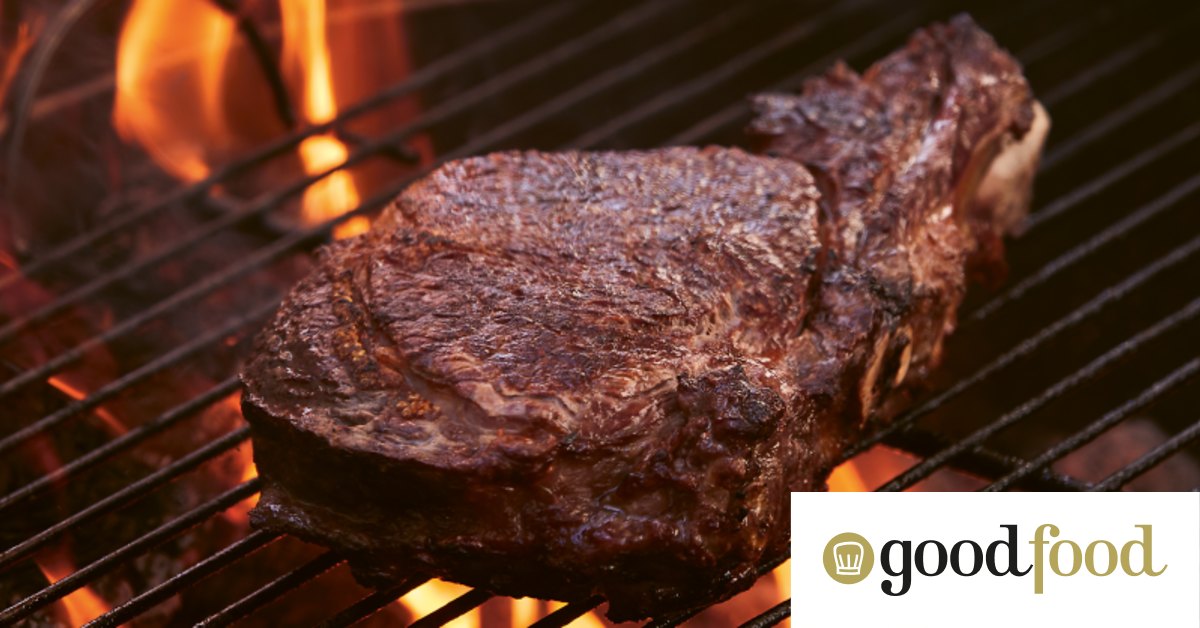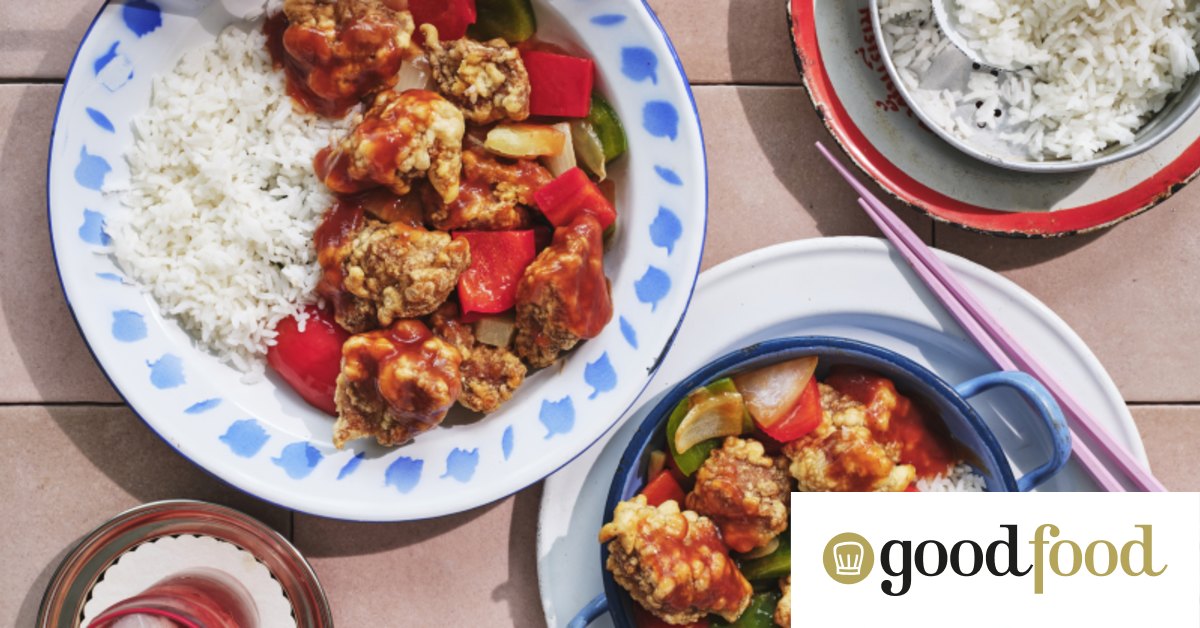Luke Powell from Sydney’s LP’s Quality Meats shares his simple steps to cooking a better, tastier steak.
You have reached your maximum number of saved items.
Remove items from your saved list to add more.
Save this article for later
Add articles to your saved list and come back to them anytime.
If there’s a chef who knows his meat, it’s Luke Powell. Since opening in a Chippendale laneway in 2014, his smokehouse and smallgoods supplier LP’s Quality Meats has become a go-to destination for Sydneysiders seeking quality mortadella, salami, saucisson and pepperoni.
After several years as a “rollicking carvery” open to the public, the restaurant side of the business closed, moving to the industrial suburb of Marrickville to focus on wholesale production of smallgoods.
Now, Powell has published a home guide to grilling and smoking your own meats, and making your own sausages and charcuterie. Here, he shares his techniques for grilling steak and pork chops from his cookbook Quality Meats.
Grilled steak
Good steak is a luxury. I much prefer to cook steak only occasionally, sourcing the best I can from the butcher. That way, it keeps its value as a cut built around excitement and anticipation. My absolute favourite steak is rib-eye. If you’re more of a fillet or sirloin person, you may find this cut tastes fattier due to its high level of intramuscular fat, but I prefer it – it adds juiciness and brings different textures. You can cook sirloin following the same method, although I recommend trying to get it on the bone: cooking steak on the bone adds flavour, and it just looks better on the plate. It pays to get a fairly large piece of steak, as I’ve suggested here. Anything less, and it’s hard to develop a nice crust before the inside begins to overcook. Plan to cook your steak gently and slowly, and you’ll be rewarded.
INGREDIENTS
- 1kg rib-eye steak
- olive oil, for drizzling
- flaky salt
METHOD
- Remove the steak from the fridge and leave it to temper for at least an hour before cooking.
- Light a charcoal grill or barbecue and let it burn down to a steady bed of white glowing coals, hot enough that you can only hold your hand close for a couple of seconds. It would also be good to have one area with less embers and another with no coals so that you can slow things down or move the steak away from the flames if things get out of hand. Set a wire rack above the coals.
- Rub a little olive oil all over the steak to coat, then season it liberally with flaky salt. Season harder than you think because a lot of salt will fall off during cooking, and with meat this thick you won’t risk overseasoning.
- Place the steak on the rack above the coals. Rearrange the coals if needed, positioning the meat so it can cook slowly. Gently cook the steak, flipping it every few minutes to evenly distribute the heat, and monitoring the temperature with a probe thermometer.
- When the steak is around 10-12C below your desired doneness (see below), start working on developing the crust: lower the rack closer to the coals and rearrange the coals to form more of a hot zone. Continue to turn the steak occasionally, allowing a nice crust to form. When the steak is 5C below your desired doneness, remove it from the heat and leave it to rest. The residual heat will continue to cook the meat as it rests and carry it to the desired temperature.
- To carve the steak, stand it on a chopping board with the bone pointing up, then carefully run a knife between the bone and the meat. Lay the meat flat on the board and, with your knife at a 45-degree angle, cut the steak into 1cm slices. Try to keep the slices in formation for serving by sliding the knife underneath the whole lot and transferring them to a warm plate. Gently season with salt between each slice.
Serves 2-4
Degrees of doneness for beef, lamb and pork
- Bleu: 45C
- Rare: 50C
- Medium-rare: 55C
- Medium: 60C
- Medium-well: 65C
- Well-done: 70C
Keep in mind that when you’re grilling or roasting, the residual heat continues to cook the item even after it’s taken off the heat. This means you’ll need to pull it off when it’s a few degrees shy of where you want it to be. You can always cook something more if it’s under, but you can’t go back if it’s over.
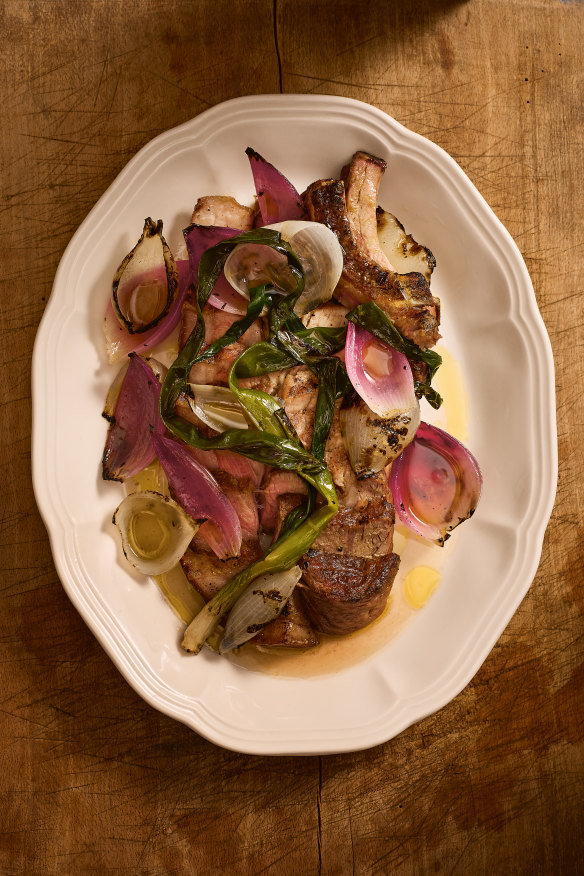
Grilled pork chop with sweet and sour grilled onions
It’s hard to beat a good pork chop. It has all the best things about pork: a salty, golden crust, a juicy interior, a bone to chew on and, if you play it right, delicious salty crackling. Make sure the chop is of a decent thickness, otherwise it will cook too quickly without developing those lovely characteristics we want to achieve. It’s best to use pork that’s been dry-aged for a minimum of a week so the skin has had time to dry thoroughly; if you’re cooking pork that’s been packed in a plastic vacuum bag or wrapped in plastic, there’s a high chance it won’t reach its full potential. Grilling pork chops over coals can be a wild experience because pork is incredibly fatty; as the fat renders onto the coals, it can cause uncontrollable flare-ups. You can limit this by paying attention to how you position your chop, and ensuring the area beneath it (where it might drip) is free of coals. Or you can follow the method I use here and start cooking the pork in a cast-iron frying pan over the coals; it’ll help the flesh achieve a great crust while also rendering out some excess fat.
INGREDIENTS
- 1 pork loin chop, about 500g-1kg
- mild olive oil, for drizzling
- flaky salt
METHOD
- Remove the pork chop from the fridge and leave it to temper for at least an hour before cooking.
- Light a charcoal grill or barbecue and let it burn down to a steady bed of white glowing coals, then place a cast-iron frypan on a wire rack set above the coals to get very hot.
- Rub a little olive oil all over the chop to coat, then season it liberally with flaky salt. Place the chop in the pan and let it cook undisturbed for 3-4 minutes or until it colours and develops a crust. Flip the chop over and let it colour and develop a crust on the other side.
- The pan should have accumulated some fat from the chop, which is great for crisping the skin. Using a pair of tongs, carefully balance the chop upright in the pan, skin side down, and cook for about 5 minutes or until the fat has rendered, and the skin is golden and starting to crackle nicely. Due to the shape of the chop, you may need to roll it backwards and forwards as it cooks to get an even result.
- Set the pan aside, reserving the rendered fat, and transfer the chop onto the wire rack set over the coals. Let the chop gently cook through, flipping it occasionally and monitoring the internal temperature with a probe thermometer. You’re looking for a final temperature of 57-60C, so remove it from the heat when it’s around 55C and let it creep up to temperature as it rests. The meat will be around medium; you can cook it longer, but you don’t do the pig justice by doing so – cooking your pork slightly pinker results in a far superior, juicier chop. I then like to put the chop back into the rendered fat in the pan to chill out until it cools to around 50C.
- To carve the pork chop, stand it on a chopping board with the rib bone pointing up, and run a sharp knife between the bone and meat. Once you get to the bottom, you’ll need to change the angle of the knife to horizontal to follow the bone around and release the meat. Lay the meat flat on the board, taking care not to let the crackling come into contact with any juices, which will make it soggy and undo all your hard work. With your knife at a 45-degree angle, cut the meat into 1cm slices, then arrange it on a warm plate and gently season with salt between each slice. Lay the bone alongside and pour any extra juices over the meat.
Serves 2-4
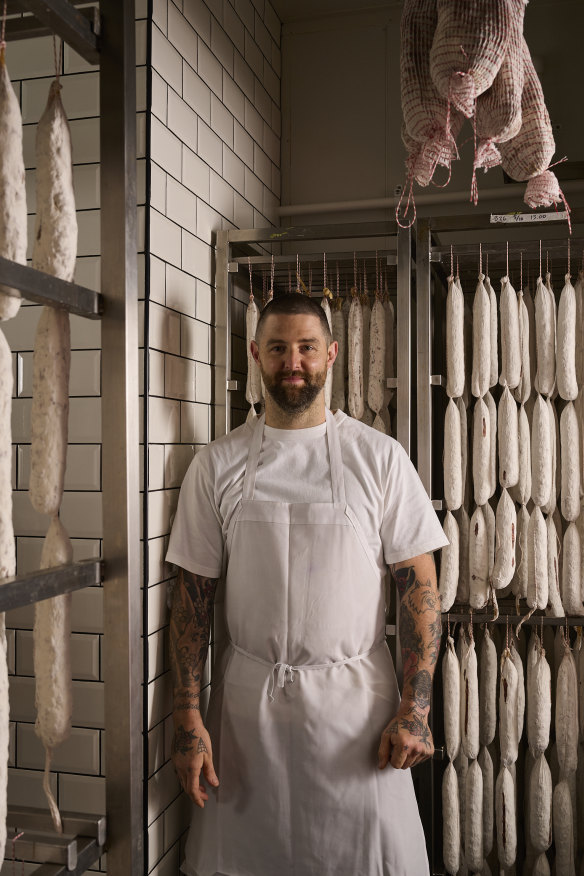
Sweet-and-sour grilled onions
Charred, sweet onions and a sharp, sweet dressing make a brilliant garnish for your grilled pork chop.
INGREDIENTS
- 1 white onion, skin on
- 1 red onion, skin on
- 2 spring onions, greens and roots attached
- olive oil, for drizzling
- 2 tbsp palm-sugar vinegar (see below)
- 80ml extra virgin olive oil
- juice of ½ lemon
- 250g red mustard leaves (optional)
- flaky salt
METHOD
- Add the whole white and red onions to a large saucepan of boiling water. Cook at a gentle boil for 25 minutes or until tender, then plunge them into a bowl of iced water to cool them. Blanch the whole spring onions in the same pan of water for 1 minute, then add them to the iced water to cool. Transfer all the onions to a clean tea towel to dry.
- Meanwhile, light a charcoal grill or barbecue and let it burn down to glowing coals. (If you’re cooking the pork chop first, just keep the grill going after you take off the pork to let it rest.)
- Cut the white and red onions in half, then cut one of each of the halves in half again. Peel off the skin, then separate the layers. Cut the roots from the spring onions, but otherwise leave them whole.
- Lightly drizzle all of the onions with olive oil, then season with salt. Place them on a rack set over the coals and cook, tossing occasionally, for 2-3 minutes or until the onions are charred around the edges.
- Transfer the onions to a bowl and dress them with the palm-sugar vinegar. Add the extra virgin olive oil and lemon juice – and the mustard leaves, if using. Season with flaky salt and pepper and gently toss it all together with your hands. Pile the onions on top of the pork chop.
Serves 2-4
Palm-sugar vinegar
INGREDIENTS
- 100g palm sugar
- 100ml chardonnay vinegar
- 2g garlic, finely grated
METHOD
- Start by making the palm-sugar vinegar. Crush the palm sugar and put it into a saucepan. Moisten the sugar with water. Cook over medium heat, swirling the pan occasionally, until the sugar begins to caramelise, then turns dark and very fragrant. Be careful not to take it too far or it will burn. Remove from the heat and add the vinegar (be careful; it will spit), then stir in the garlic and let it cool completely. Once cooled, the palm-sugar vinegar can be kept in the fridge for a week.
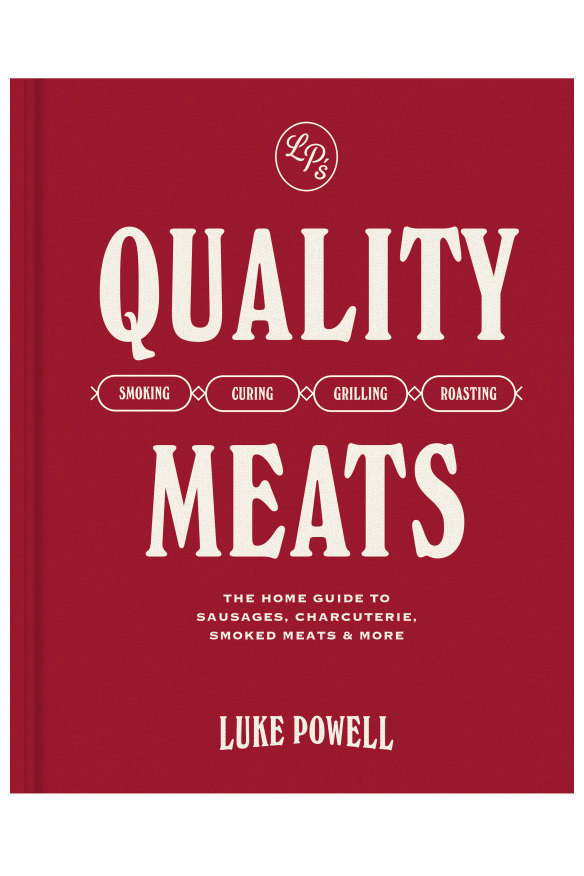
This is an edited extract from Quality Meats by Luke Powell, published by Murdoch Books, RRP $55.00. Photography by Alicia Taylor.
The best recipes from Australia’s leading chefs straight to your inbox.
You have reached your maximum number of saved items.
Remove items from your saved list to add more.

